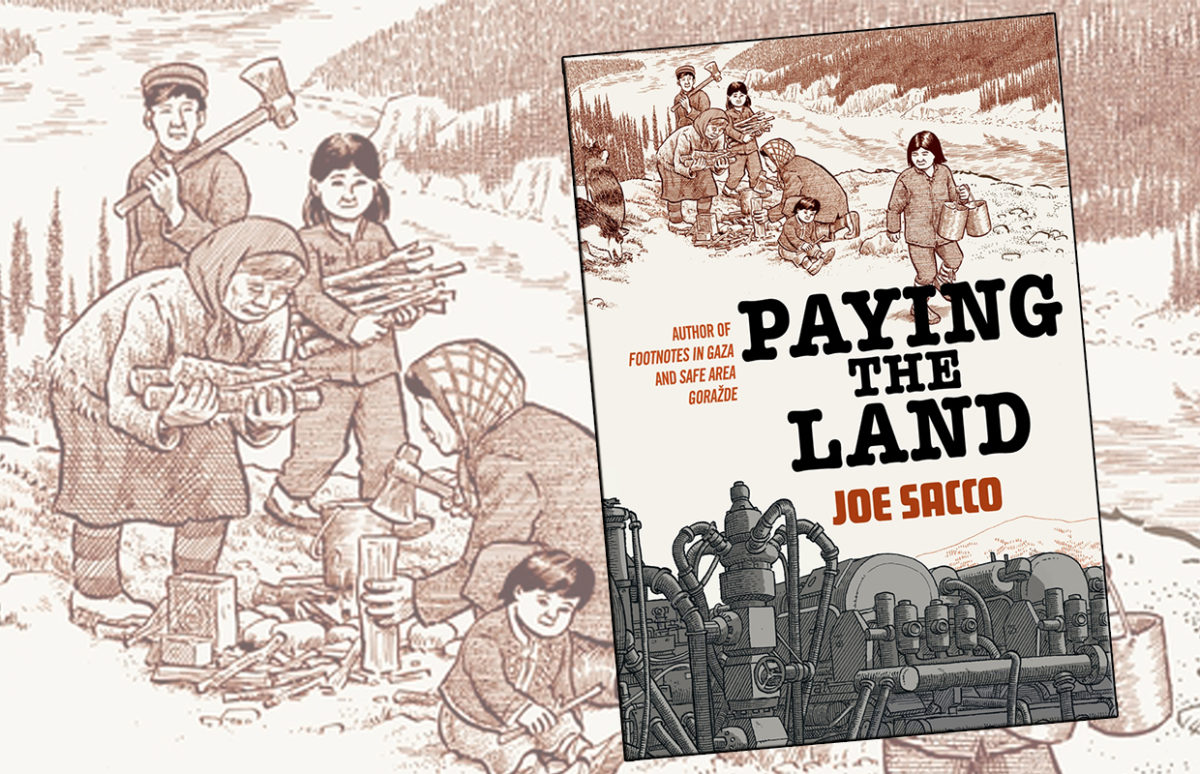Joe Sacco has been creating works of comic non-fiction for more than two decades, illustrating conflict, war and human atrocity through the medium of graphic art. For his latest book — "Paying the Land"—Joe Sacco travels to the Arctic regions of Canada and tells us the history of the Dene Nation, an indigenous people living in a semi-desert area of northern Canada.
 Joe Sacco is a Maltese-American cartoonist and journalist. Today, he is considered a master of "documentary" comics. Born in Malta in 1960, Sacco’s family moved in Australia when he was one. He spent his childhood in Melbourne. In 1972, the family moved to the U.S.A. where Sacco still lives today, in Portland, Oregon.
Joe Sacco is a Maltese-American cartoonist and journalist. Today, he is considered a master of "documentary" comics. Born in Malta in 1960, Sacco’s family moved in Australia when he was one. He spent his childhood in Melbourne. In 1972, the family moved to the U.S.A. where Sacco still lives today, in Portland, Oregon.
He wanted to be a reporter. Armed with a BA in Journalism from the University of Oregon and a passion for comic books, Sacco spent the 1980s travelling, living in Malta and elsewhere in Europe, working as a cartoonist and an editor for comics presses….
In 1992, he travelled for the first time to the Middle East and Palestinian Territories. He spent two months gathering interviews, stories and sketches and came away with the material that would make up his graphic-novel series Palestine.
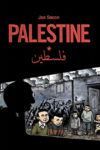
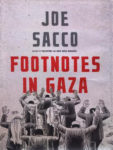 With these series, Sacco created the structure of his upcoming work, which is constructed in an almost travel diary-like format. The narratives follow Sacco, who is always a character in his own comics, as he attempts to build an understanding of the political and social situation that he has placed himself in.
With these series, Sacco created the structure of his upcoming work, which is constructed in an almost travel diary-like format. The narratives follow Sacco, who is always a character in his own comics, as he attempts to build an understanding of the political and social situation that he has placed himself in.
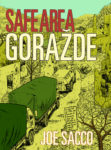 Sacco spent also many years investigating the Bosnian war (Gorazde, Soba a history of Bosnia, Last days of War). Firmly set in reality, his work is a combination of investigative journalism and a graphic-novel form which is part of a comics tradition that produced works such as Art Spiegelman’s Maus, (based on the testimony of Spiegelman’s father, an Auschwitz survivor).
Sacco spent also many years investigating the Bosnian war (Gorazde, Soba a history of Bosnia, Last days of War). Firmly set in reality, his work is a combination of investigative journalism and a graphic-novel form which is part of a comics tradition that produced works such as Art Spiegelman’s Maus, (based on the testimony of Spiegelman’s father, an Auschwitz survivor).
Conflict
Sacco has spent much of his career documenting conflict zones and the plight of oppressed peoples. It was his war reportage that first brought him to international attention. Following The Great War (2013), his monumental fresco on the Battle of the Somme — a wordless, twenty-four-foot panorama depicting the first day of this Battle — Sacco wanted to move away from violence.
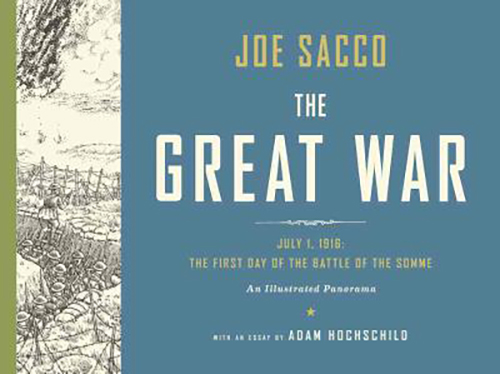
He began to consider book about climate change, using an approach through the question of indigenous people and resource extraction.
Meeting the Dene
He had previously been invited to the Canadian Northwest Territories to give a talk on Palestine which he was unable to attend. When, in 2015, the French magazine XXI , whose editorial line consists of "mixing all types of storytelling - including comics - to tell the real story", commissioned him to create a sixty-page piece , he returned to this offer.
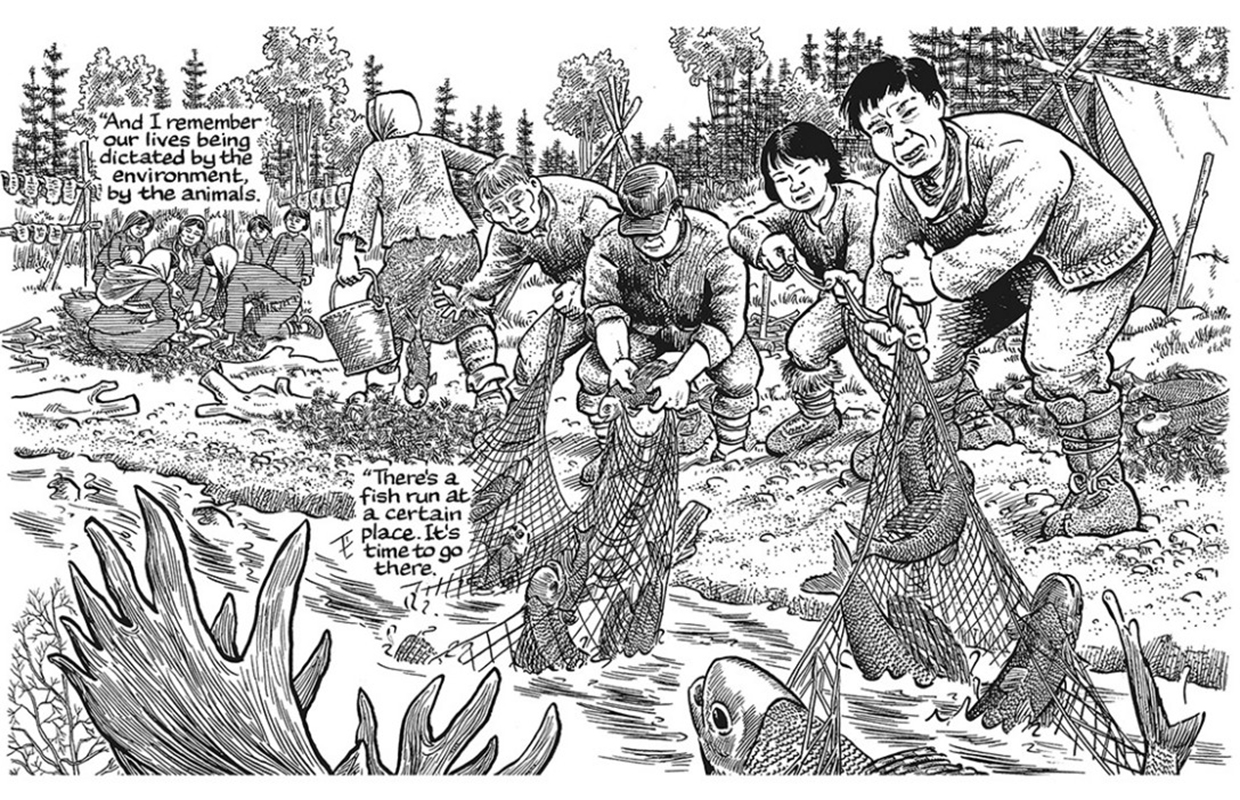
Arriving in the region, Sacco found The Dene Nation, a First Nations group in conflict over the costs and benefits of development. He also found the story he’d come for.
A first version of his graphic report, entitled "Les Terres fracturées", was published by XXI in two parts in 2016.
The artist, returned to complete his investigation in this region and his initial work now takes the form of the 272-page black-and-white book tracing the history of the Dene Nation.
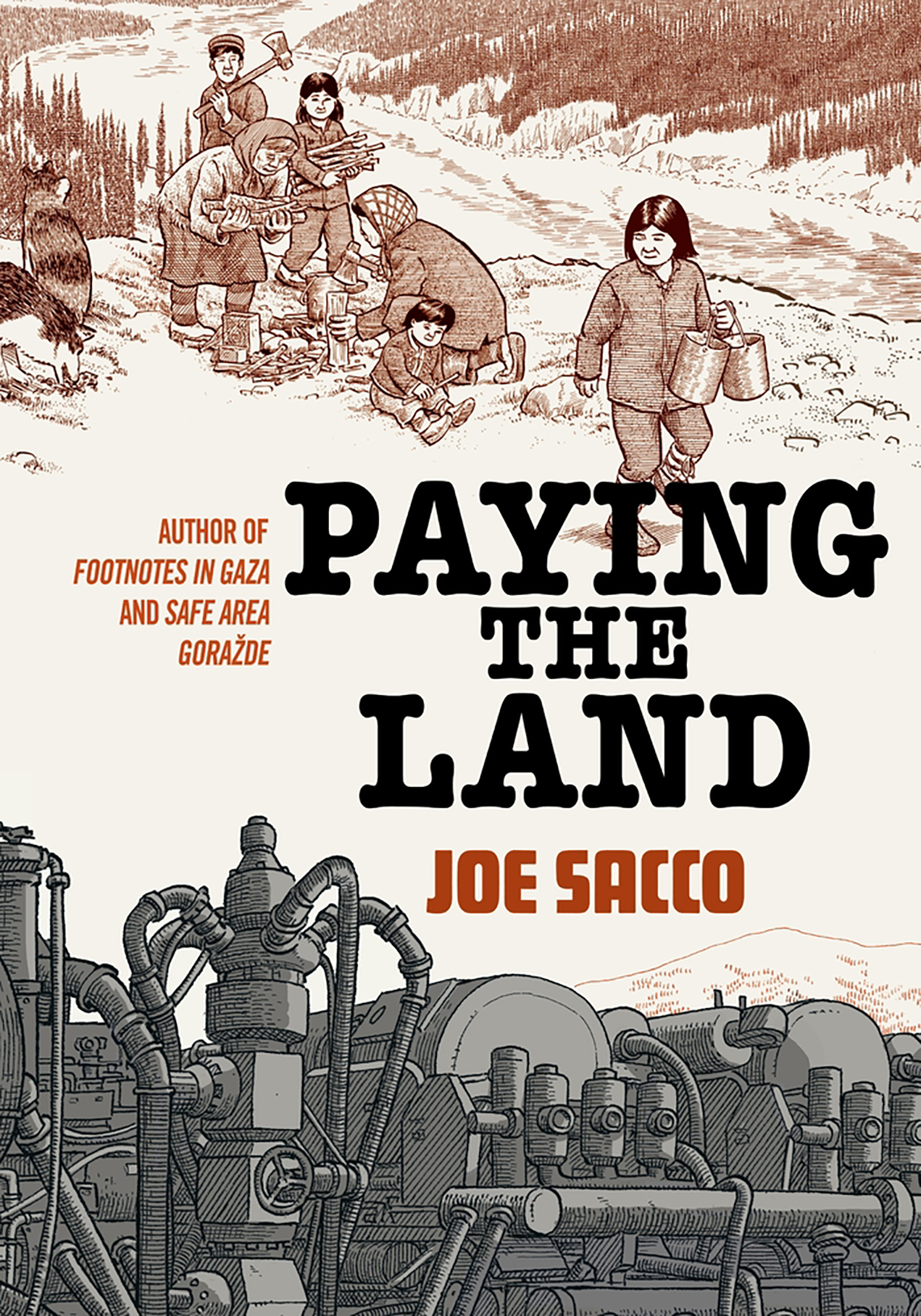
Living the Land
The Dene have lived in the Mackenzie River Valley since time immemorial. To the Dene, the land owns them, and it is central to their very way of being. Paying the Land begins with one man recounting his childhood: “My grandfather tells me that when they were travelling in a moose-skin boat, that’s when I came into the world”.
Sacco introduces us to a nomadic existence in the bush, time spent travelling with teams of dogs, a lifestyle “dictated by the environment, by the animals”, marked by “very, very little contact with the outside world”. These people get up with the dawn to say hello to the sun and go to bed early “to allow the other spirits to do their thing at night”.
This is a philosophy and lifestyle where the seasons keep the time; where the men know how to sew and the women know how to hunt; where children can safely roam between camps; and where younger members learn from older members by listening, watching and imitating.
But the subarctic Canadian Northwest Territories are also home to valuable resources such as oil, gas, and diamonds. With mining, came jobs and investment, but also road-building, pipelines, and toxic waste, which scarred the landscape, and alcohol, drugs, and debt, which deformed a way of life.
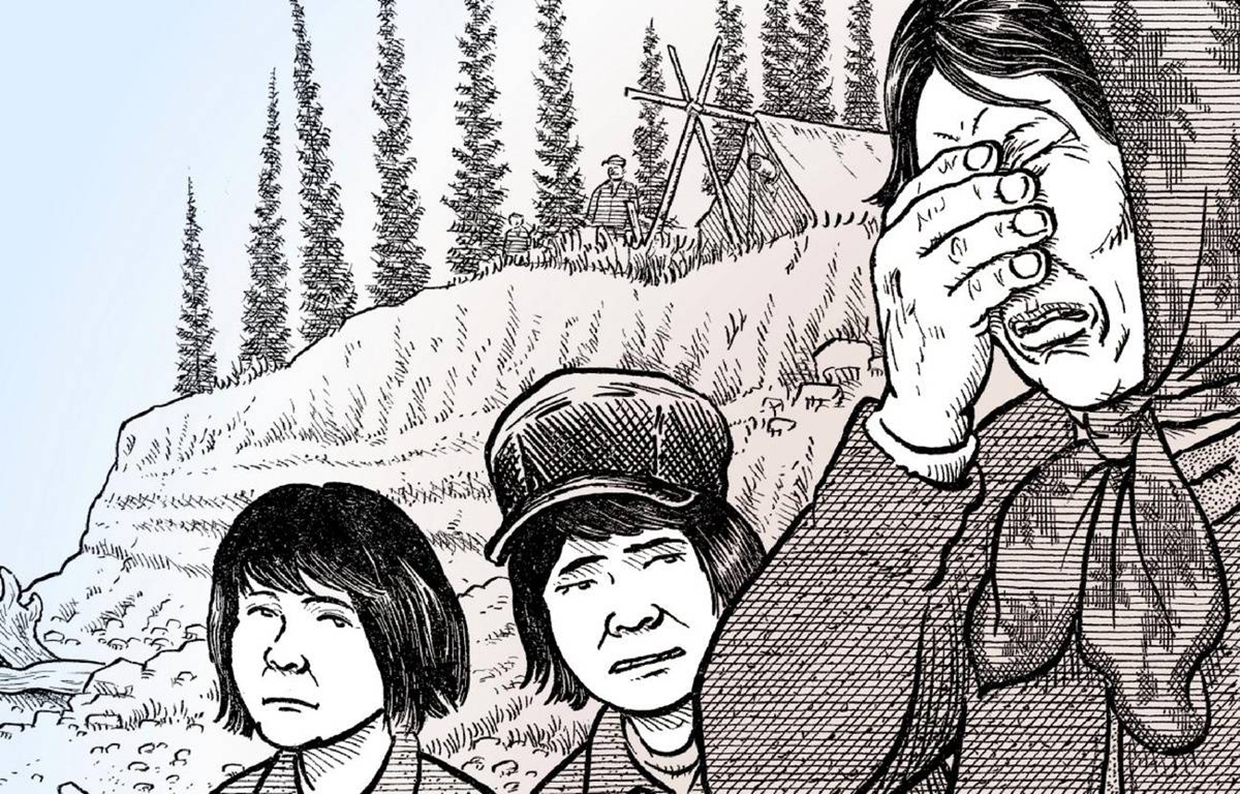
A Nation in Danger
The mining boom is not the only assault on indigenous culture. Sacco recounts the shattering impact of a school system that aimed to “remove the Indian from the child”. He describes all the government land claims against the Dene Nation. He shows us the destructive process that drove the Dene from the wilderness into settlements and turned them into wage laborers.
Joe Sacco depicts the death of a people that has lost its language in three generations as it succumbed under the weight of economic colonialism.
Using the same methods as usual (rigorous investigation, long interviews with residents) Joe Sacco paints a portrait of several generations of these indigenous people by embracing political, economic and cultural issues.
Paying the Land signals a return to his first love since Sacco had not produced a drawn survey since 2010.
English
Paying the Land - Metropolitan Books - Henry Holt and Co.
272 Pages - ISBN: 9781627799034
French
Payer la terre - Editions Futuropolis et XXI
272 pages - ISBN : 9782754818551
More to read…
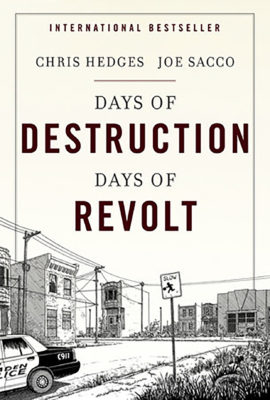
In 2012, Joe Sacco in collaboration with Pulitzer Prize winner journalist Chris Hedges, published “Days of Destruction, Days of Revolt”.
Both have decades of experience as correspondents in war zones, but in this book they turn their attention to the bombed-out and collapsed areas of their own country. They wanted to show in words and drawings what life looks like in places where the marketplace rules without constraints, where human beings and the natural world are used and then discarded to maximise profit.
The book starts in the western plains, with a sketch of life on the Pine Ridge Dakota reservation in South Dakota where Native Americans were sacrificed in the race for land and empire. The second chapter brings us into Camden, N.J., telling the story of the old manufacturing centers and coal fields that fuelled the industrial revolution, but now lie depleted and in decay. The following chapter does the same for West Virginia, focusing on coal mining’s economic, social and environmental effects. The fourth chapter covers human slavery in the Florida tomato fields, while the book’s final chapter takes place in New York City, at the centre of the Occupy Wall Street movement.
Sacco, maybe even more so than in his other work, allows characters and situations to speak for themselves. If you are a close reader, his point of view is clear, but it is controlled in such a way that you are allowed to disagree with him.
Copyright(s) :
All images © Joe Sacco, XXI & Futuropolis 2020
Tag(s) : "BD" "Canada" "Colonization" "comic book" "culture" "First Nations" "indigenous people" "journalism" "report" "Shale gas" "U.S. culture" "U.S. literature"





